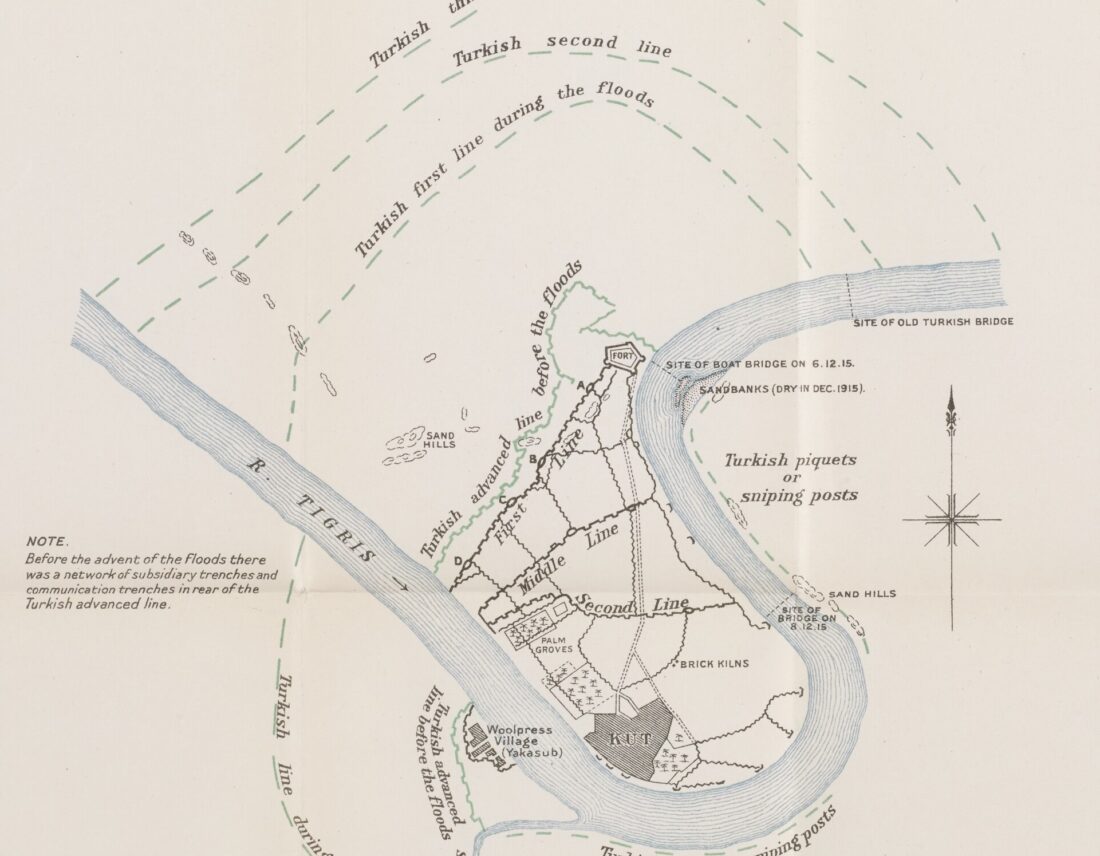Captivity
Aside from the men who were too sick to walk, the majority of the column was marched to Shumran, 8 miles upriver from Kut. It was here that the officers and men were separated. Though the captured officers would experience privation and hardship over the coming years, it was the rank and file that would suffer the most.
From Shumran, the POWs began forced marches west toward Baghdad, Syria and Anatolia. The marches were long, the weather was searingly hot, and the rations given to the already emaciated men were meagre. To add to the dire situation, the responsibility of the prisoners was given not to Ottoman soldiers, but to various groups of local tribesmen inclined to cruelty toward their Indian and Gurkha prisoners. Consequently, hundreds of men died during the desert marches. Many survivors described how men that were too weak to continue would collapse by the side of the road, where they would either die of exposure or be killed by their guards.
The Gurkhas fared comparatively well on the march and maintained strict discipline. Whilst many British and Indian troops sold their clothing for extra food, the Gurkhas obeyed orders not to do so. Thus, the Gurkhas were some of the only soldiers on the march who had their complete uniforms. The Gurkhas also took it upon themselves to safeguard other POWs. Sergeant Macnamara of the Supply & Transport Corps reported on how the Gurkhas aided British soldiers in difficulty by collecting stragglers, cooking grain rations and foraging for firewood.
Following the marches, a majority of the Gurkha and Indian troops were sent to Ras-al-Ayn in modern-day Syria, where they were used as forced labour in constructing railway tunnels under the supervision of German advisors. Although the marches were behind them, the Indian and Gurkha troops continued to suffer from awful treatment. P. W. Long, a British POW, described the state the Indian prisoners were kept in:
‘Their condition was truly pitiful. They resembled animated skeletons hung about with filthy rags. No tents or shelter had been provided, and they were living in holes like pariah dogs […] Scores of them were too sick to move from their holes, and I saw many who were obviously dying, yet I was told that they received no medical attention whatever.’
Despite appalling conditions, the survivors of the 2/7th GR continued to preserve discipline. In the absence of their officers, three senior NCOs (Colour Havildar Fatehbahadur Limbu, Colour Havildar Bhotri Khattri and Havildar Hari Singh Khattri) took charge of the men. Singh Khattri, an attached Sikh soldier, was so dedicated to the battalion that when he learned that Sikh and Gurkha soldiers were to be separated he shaved off his hair and beard in order to remain with them. Their leadership saw the battalion through almost three years of captivity. Additionally, the Regimental History credits comradeship as a major factor in their survival:
‘From first to last they were magnificent – a class apart. […] In the 2nd Battalion there was no straggling; each man took his strength from his comrades: cohesion and membership were never lost’.
There are also accounts of Gurkha soldiers mounting escapes. Lt. Sweet, who had taken part in the bridge demolition, made several escape attempts. Each time he was recaptured and suffered harsh punishment, eventually dying in captivity in 1918. Other attempts met with more success; one group led by Padamdhoj Limbu managed to get across the Taurus Mountains. After journeying through vast expanses of enemy territory the party was able to link up with the Australian Light Horse in Syria.


